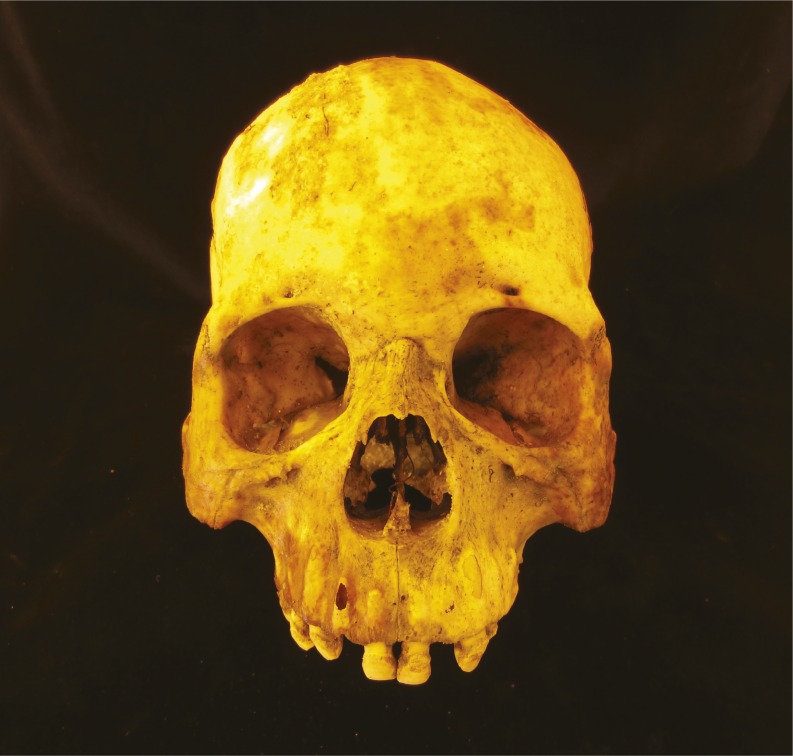Electric field might aid manufacture of low-fat chocolate
Reducing chocolate viscosity for producing low-fat chocolate. Image courtesy of iStockphoto/Ezergil.
Chocolate typically contains up to 40% fat by volume and is composed of cocoa, sugar, milk solids, and other particles suspended in liquid fat, such as cocoa butter. Reducing chocolate’s fat content increases the liquid’s viscosity and clogs production pipelines. Hence, manufacturers have largely failed in attempts to create low-fat chocolate. Rongjia Tao et al. (pp. 7399–7402) developed a method in which an electric field applied along the flow direction of liquid chocolate causes solid cocoa particles to clump into short chains and spheroids in a streamlined manner. Because particle shape influences intrinsic viscosity, the authors reasoned that the electric field-induced clumping would break the particles’ rotational symmetry and reduce both the suspension’s viscosity and the minimum amount of melted fat required to maintain proper texture and flow within the pipeline. Application of an electric field of 1,600 V/cm reduced the viscosity of a sample of Mars chocolate by 43.5%, enabling a potential reduction in fat content greater than 10%. Similar results were obtained with samples from other manufacturers, suggesting the method’s wide applicability. With further improvements, such as optimizing the strength and duration of the electric field, the method might help pave a long-sought path toward the manufacture of low-fat chocolate, according to the authors. — P.N.
Refugees and local economy
Kigeme refugee camp in southern Rwanda. Image courtesy of Laura Eldon (Oxfam, Oxford).
The number of refugees displaced by conflicts or natural disasters worldwide is growing. The economic impact of refugees on host countries is poorly understood because of a lack of relevant empirical data and adequate impact evaluation methods. J. Edward Taylor et al. (pp. 7449–7453) gathered microeconomic data from surveys administered inside and outside three Congolese refugee camps in Rwanda. The authors used the survey data to construct models of economic activity within a 10-km radius of each refugee camp, and the models helped simulate the economic impacts of refugees. At two of the camps, refugees received cash aid, whereas refugees at the third camp received in-kind food aid. According to the simulations, each additional refugee at the two cash camps increased the local real income by $205 to $253 annually, even though each refugee received only $120 to $126 in aid. The impact of each refugee at the in-kind camp was smaller than at the cash camps: a $145 increase in real annual income compared with $120 worth of aid per refugee. The results suggest that shifting from in-kind aid to cash aid can benefit refugees and host countries alike, according to the authors. — B.D.
Origins of ancient high-altitude Himalayans
Sequencing of prehistoric dental samples revealed origins of high-altitude Himalayans.
The Himalayan mountain range and the Tibetan plateau were among the last places colonized by prehistoric humans because of the unique challenges associated with living at high altitudes. However, conflicting cultural, linguistic, genetic, and archaeological evidence from modern-day populations has left the origins of the earliest Himalayan inhabitants unclear. Choongwon Jeong et al. (pp. 7485–7490) sequenced the nuclear and mitochondrial genomes of eight high-altitude Nepalese individuals dating to three distinct cultural periods spanning 3,150–1,250 years ago. The authors compared these ancient DNA sequences to genetic data of diverse modern humans, including four Sherpa and two Tibetans from Nepal. All eight prehistoric individuals across the three time periods were most closely related to contemporary high-altitude East Asian populations, namely the Sherpa and Tibetans. Moreover, both prehistoric individuals and contemporary Tibetan populations shared beneficial mutations in two genes, EGLN1 and EPAS1, which are implicated in adaptation to low-oxygen conditions of high altitudes. Taken together, the findings demonstrate that the genetic make-up of high-altitude Himalayan populations has remained remarkably stable for millennia despite multiple cultural transitions. According to the authors, the study provides evidence that the diverse material culture of prehistoric Himalayan populations is the result of acculturation or cultural diffusion rather than large-scale gene flow or population replacement from outside East Asia. — J.W.
Bias disclosure and patient trust
Disclosures of bias are used across a range of industries to protect consumers. Sunita Sah et al. (pp. 7465–7469) examined the effects of doctors’ disclosures of medical specialty bias—the tendency of doctors to recommend treatments in their own specialty. The authors analyzed 219 transcripts of recorded consultations between surgeons and prostate cancer patients. The authors report that 35 patients who heard their surgeon admit to a specialty bias were nearly three times more likely to receive surgery within 6 months of the consultation, compared with patients who did not hear a disclosure. In a randomized controlled laboratory experiment, 447 men watched video clips of a professional actor portray a surgeon who either admitted to a specialty bias or did not admit to such a bias. The authors found that the men who heard the bias disclosure were more likely to choose surgery over radiation therapy, and reported higher trust in the doctor’s expertise. The findings suggest that bias disclosures can be ineffective in healthcare settings. According to the authors, educational materials or disclosures given by third parties may be effective in reducing the unintended effects of bias disclosure. — J.W.





